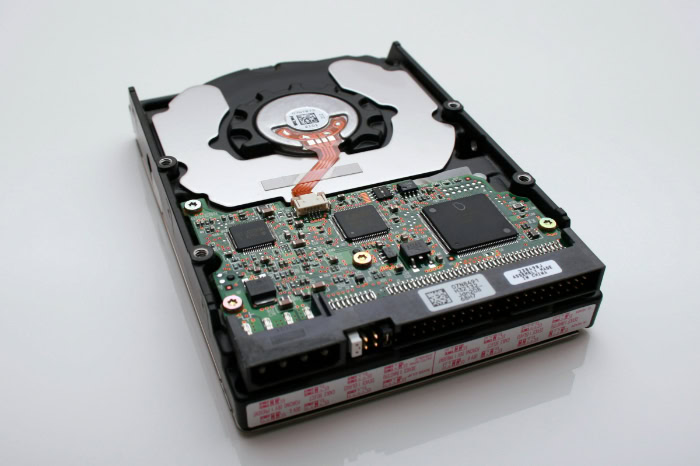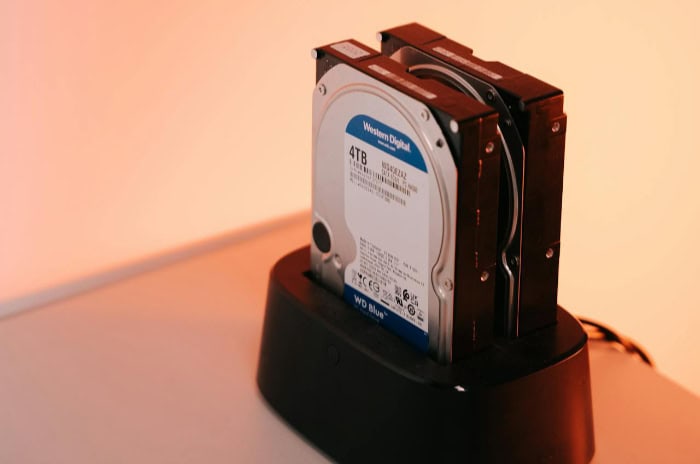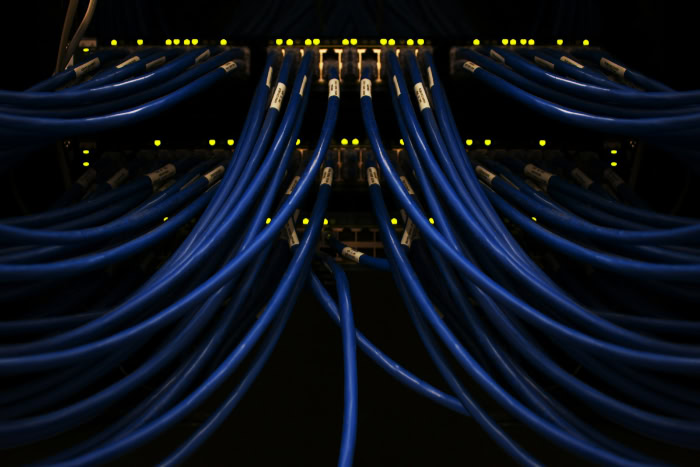RAID 0 vs. RAID 1 vs. RAID 5 vs. RAID 10: Which to Choose?

RAID might sound like a buzzword reserved for tech enthusiasts, but it stands at the heart of fast, reliable data storage for everything from gaming PCs to bustling corporate servers. Choosing the right RAID level isn’t just about plugging in extra hard drives; it’s a balancing act between speed, safety, and cost.
Selecting poorly could mean sluggish performance or, worse, devastating data loss. Each RAID level-RAID 0, 1, 5, and 10-offers its own unique blend of benefits and drawbacks, so matching your setup to your needs is essential.
Core Functionality of Each RAID Level
Selecting a RAID level involves more than just picking a name from a list. Every option comes with unique mechanics and consequences for performance, redundancy, and efficiency.
RAID 0 (Striping)
RAID 0 harnesses the speed of multiple drives by splitting, or “striping,” data evenly across all disks in the array. Imagine saving a large file; instead of writing the entire file to one disk, RAID 0 divides it into chunks and writes those chunks simultaneously to different drives.
This parallel process dramatically boosts read and write speeds, making it a favorite for performance-hungry tasks.
One of the standout perks is that no space is wasted. All the combined storage from each drive is available for use, resulting in maximum storage efficiency.
For instance, two 1TB drives give you a full 2TB usable space.
However, RAID 0 comes with a serious caveat: there is zero redundancy. If even one drive fails, all the data in the array becomes inaccessible.
The risk of data loss increases as more drives are added, so RAID 0 should only be considered for non-critical data or scenarios where speed trumps all else.
RAID 1 (Mirroring)
RAID 1 takes a different approach by copying, or “mirroring,” data identically across two or more drives. Every piece of information written to one disk is simultaneously written to its mirror.
If one drive fails, the data remains safe and instantly available on the other, providing robust protection against hardware failures.
Benefit-wise, RAID 1 offers peace of mind through full data redundancy. It also delivers swift read speeds, as the system can retrieve data from either disk, helping with simultaneous access or heavy read workloads.
On the flip side, storage efficiency drops to 50 percent. Using two 1TB drives in RAID 1, for example, still only nets you 1TB of usable space since everything gets duplicated.
Cost per gigabyte is higher, making it less appealing for those with tight budgets or large storage needs.
RAID 5 (Striping with Parity)
RAID 5 strikes a balance between speed, storage efficiency, and redundancy. Data is striped across three or more drives, but unlike RAID 0, it adds a twist: distributed parity.
Parity is essentially extra information that helps reconstruct data in case a drive fails. Instead of storing parity on a single drive, RAID 5 scatters it across all disks, ensuring no single bottleneck.
This setup lets you enjoy both improved read performance and increased usable capacity, usually calculated as the total space minus one drive’s worth. For example, three 1TB drives provide 2TB of usable storage.
RAID 5 can survive the failure of one disk without losing data, which makes it popular for file servers and moderately sized databases.
However, write speeds are usually slower, especially during intensive operations, as the system must calculate and write parity data along with your files. Rebuilding an array after a disk failure can also be risky, particularly as modern drives grow larger.
Extended rebuild times increase the chance of losing another drive during restoration, which could lead to permanent data loss.
RAID 10 (Striping + Mirroring)
RAID 10, sometimes called RAID 1+0, stacks performance on top of resilience by combining striping and mirroring. Data is first mirrored, then striped across pairs of drives.
This setup requires a minimum of four disks but rewards users with both high speed and fault tolerance.
By striping across mirrored pairs, RAID 10 delivers impressive read and write speeds, rivaling RAID 0. At the same time, if a single disk fails within a pair, the array can keep running without skipping a beat, providing robust protection against hardware failure.
Multiple drives can fail as long as no mirrored pair is completely lost.
However, RAID 10 shares RAID 1’s limitation of 50 percent storage efficiency. Half the total disk space is used for redundancy, so four 1TB drives yield only 2TB of usable space.
The need for more drives and the reduced capacity make this one of the pricier RAID options, but for those seeking both speed and strong data protection, RAID 10 stands out as a top-tier choice.
Performance and Redundancy Comparison

Comparing RAID levels means looking closely at how each setup handles speed, resilience, and storage efficiency. While raw performance often steals the spotlight, true value comes from a balanced view of what each RAID configuration can offer under stress or failure.
Speed
Performance can vary significantly between RAID types. RAID 0 leads the pack in both read and write speeds because it spreads data in stripes across all drives, letting multiple disks work together in perfect sync.
Gamers, video editors, and anyone needing fast file transfer will notice a clear difference with RAID 0, where bottlenecks are minimized and throughput can scale almost linearly with each additional drive.
RAID 1 also provides fast read speeds, especially when the controller can access both mirrored drives simultaneously. However, write speeds are generally similar to a single disk, since all data must be duplicated across each mirror in the array.
RAID 5 offers a balanced approach, improving read speeds thanks to striping, but write performance takes a hit due to parity calculation. Every write operation requires the RAID controller to calculate and update parity information, which introduces extra latency compared to RAID 0 or RAID 10.
RAID 10 stands out as the sweet spot for demanding workloads that need both speed and protection. Its combination of striping and mirroring means both read and write speeds are high.
Many enterprise environments prefer RAID 10 for databases and applications requiring fast, frequent writes with minimal delay.
Fault Tolerance
Resilience is just as important as speed, especially for systems that hold valuable information. RAID 0 offers no protection at all; if a single drive fails, the entire array is lost.
For non-essential data, this risk may be acceptable, but for anything important, RAID 0 is a gamble.
RAID 1 provides extraordinary peace of mind, since any single drive can fail and all data remains safe and accessible from the mirror. Swapping out a failed disk and rebuilding the array is usually straightforward and quick.
RAID 5 can survive the failure of one drive thanks to distributed parity. If a drive goes down, data can be rebuilt using parity information.
However, during rebuilds, the risk of a second drive failure increases, especially with large-capacity disks. A second failure during this period would mean permanent loss of data.
RAID 10 stands above the rest with its ability to handle multiple drive failures, as long as the failures do not occur within the same mirrored pair. Even during a failure, performance remains strong and the risk of total data loss is much lower compared to RAID 5.
Storage Efficiency
Getting the most out of your drives often means making a trade-off with redundancy. RAID 0 squeezes every last byte of usable space out of its drives, since there’s no redundancy or backup happening in the background.
All available storage is usable, which is great for temporary or cache data, but risky for anything important.
RAID 1 trades space for security. Only half the total drive capacity is usable because each piece of data is duplicated.
The formula is simple: usable capacity equals the size of a single drive, regardless of how many disks you add.
RAID 5 improves storage efficiency by allocating one drive’s worth for parity. The usable formula is (N-1) times the size of the smallest drive, where N is the number of disks.
For example, in a four-disk array, three drives’ worth of space would be available.
RAID 10 also operates with 50 percent efficiency, since half of the drives are used for mirroring and the other half for striping. Usable capacity is always half the total drive space, but in return, you gain both speed and strong protection.
Ideal Use Cases for Each Configuration

Selecting the most suitable RAID level becomes simpler when you match it with your specific workload and priorities. Speed, safety, and cost all play a part in determining which configuration works best in practice.
Each RAID level fits naturally into certain settings, providing substantial value when paired thoughtfully with the right task.
RAID 0
RAID 0 stands out in environments where performance trumps redundancy. Gamers looking to minimize loading times or enthusiasts managing large video editing projects often choose RAID 0 for its raw speed.
Data is striped across multiple drives, which allows enormous files to be read and written impressively quickly. Temporary data processing, scratch disks for media projects, or any scenario where throughput matters far more than long-term data safety can benefit from RAID 0.
However, using RAID 0 for important files or irreplaceable data is never recommended due to the high risk of complete loss if just one drive fails.
RAID 1
RAID 1 finds its place in settings where protecting data is the highest priority. Small business servers, home office networks, and critical system drives all gain peace of mind from the automatic duplication of every file.
Even if a drive stops working, your system continues running seamlessly, and no data is lost. The security RAID 1 offers makes it perfect for storing essential records, financial databases, or crucial client information.
While storage space is halved, the simplicity and reliability of RAID 1 make it attractive to anyone who cannot afford downtime or data loss.
RAID 5
RAID 5 creates a solid middle ground for users who want more efficiency without sacrificing all redundancy. File servers and medium-scale databases often rely on RAID 5 to offer both increased read speed and protection against a single drive failure.
Businesses storing shared resources, project files, or collaborative documents can take advantage of RAID 5’s blend of capacity and fault tolerance. The ability to recover from a single disk loss, combined with good storage efficiency, makes RAID 5 a favorite for organizations managing moderate workloads and budgets.
It’s important, though, to acknowledge the risks associated with rebuilding large arrays and to avoid RAID 5 in write-heavy or critical applications without strong backup support.
RAID 10
RAID 10 becomes the top choice for demanding enterprise environments, especially where downtime or data loss would be disastrous. High-transaction databases, business-critical applications, and servers handling a constant stream of input and output all benefit from RAID 10’s unmatched performance and robust fault tolerance.
Financial institutions, real-time analytics, and ecommerce platforms often turn to RAID 10 for its speed and ability to withstand multiple drive failures, provided they are not in the same mirrored pair. While more expensive due to the higher drive count and reduced storage efficiency, the combination of fast access and reliable redundancy is well worth the investment for organizations where performance and data protection must go hand in hand.
Key Decision Factors

Selecting the best RAID level is about where your priorities meet your constraints. Each setup comes with trade-offs, and picking the right solution requires a practical look at what matters most for your specific environment.
Data Criticality
The value of your data should direct your RAID strategy. Critical business information, priceless personal archives, or anything that cannot easily be recreated demands redundancy.
RAID 1 and RAID 10 both mirror information, offering immediate protection if a drive fails. For these scenarios, the slight sacrifice in storage efficiency is a small price for peace of mind.
On the other hand, if you are working with temporary files or data that can be reproduced without much hassle, speed may be a higher priority than protection. RAID 0 caters to those seeking performance boosts in applications where data loss is not a disaster.
Budget Constraints
Hardware costs can quickly multiply depending on your desired level of protection. RAID 10, for example, requires twice as many drives as RAID 0 or RAID 5 to achieve the same usable capacity.
That investment brings security and performance, but not every setup justifies the expense. RAID 1 and RAID 5 offer more moderate solutions; RAID 1 halves your available space, but setup is straightforward.
RAID 5 provides greater storage efficiency and still protects against one disk failure, all without doubling your investment. Balancing cost and requirements is essential, as overspending for unnecessary redundancy or sacrificing safety for savings can both lead to regret.
Workload Type
The pattern of data access and modification should guide your RAID selection. Read-heavy environments, such as media libraries or file archives, typically thrive with RAID 5.
It offers improved read speeds thanks to striping and can handle multiple users accessing files at once. Write-heavy tasks, such as database servers or transaction processing, often see better results with RAID 10.
Its design accommodates frequent data changes without the write penalties associated with parity calculations in RAID 5. Thinking about your actual data use-not just average benchmarks-ensures smoother performance and a better fit for your daily demands.
Conclusion
Selecting the right RAID level is all about weighing trade-offs among speed, data protection, storage efficiency, and overall cost. RAID 0 offers unmatched performance and full use of available storage, but at the expense of any type of redundancy; it shines only in scenarios where data loss is acceptable.
RAID 1 delivers strong peace of mind through mirroring, making it ideal for safeguarding vital information, yet it comes at the cost of halved usable capacity and increased spending per gigabyte. RAID 5 occupies a middle ground, offering good storage efficiency and fault tolerance appropriate for moderate workloads, though rebuild risks make it less appealing for large, critical environments.
RAID 10 stands out for combining impressive speed with robust redundancy, but requires a larger investment and sacrifices half of total disk space.
For users focused on raw speed with expendable data, RAID 0 answers the call. Small businesses and anyone needing simple, reliable protection for important files will find RAID 1 both straightforward and effective.
RAID 5 best suits groups managing shared resources or file servers on a budget who still need some level of redundancy. If both performance and resilience are non-negotiable, RAID 10 is worth the premium, especially in demanding enterprise or high-transaction settings.
No RAID configuration entirely replaces the need for thorough backups. Always assess your true needs, the value of your data, and your willingness to invest in hardware.
By matching your goals with the right RAID level, you can maximize performance, safeguard your information, and make the most out of your storage investment.


